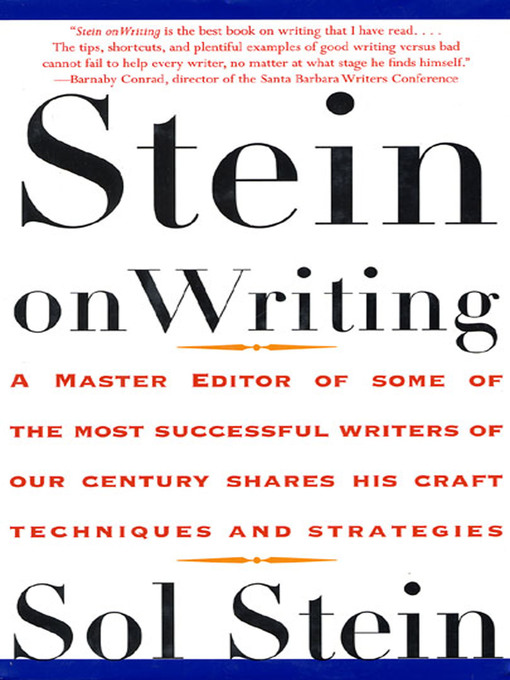Your future as a writer is in your hands. Whether you are a newcomer or an accomplished professional, a novelist, story writer, or a writer of nonfiction, you will find this book a wealth of immediately useful guidance not available anywhere else. As Sol Stein, renowned editor, author, and instructor, explains, "This is not a book of theory. It is a book of useable solutions— how to fix writing that is flawed, how to improve writing that is good, how to create interesting writing in the first place."
You will find one of the great unspoken secrets of craftsmanship in Chapter 5, called "Markers: The Key to Swift Characterization." In Chapter 7, Stein reveals for he first time in print the wonderful system for creating instant conflict developed in the Playwrights Group of the Actors Studio, of which he was a founder. In "Secrets of Good Dialogue," the premier teacher of dialogue gives you the instantly useable techniques that not only make verbal exchanges exciting but that move the story forward immediately. You won't need to struggle with flashbacks or background material after you've read Chapter 14, which shows you how to bring background into the foreground.
Writers of both fiction and nonfiction will relish the amphetamines for speeding up pace, and the many ways to liposuction flab, as well as how to tap originality and recognize what successful titles have in common. You'll discover literary values that enhance writing, providing depth and resonance. You'll bless the day you read Chapters 32 and 33 and discover why revising by starting at page one can be a serious mistake, and how to revise without growing cold on your manuscript.
In the pages of this book, nonfiction writers will find a passport to the new revolution in journalism and a guide to using the techniques of fiction to enhance nonfiction. Fresh, useful, informative, and fun to read and reread, Stein on Writing is a book you will mark up, dog-ear, and cherish.
- Available now
- New E-book Additions
- New kids and teen additions
- Most popular
- Best of the Library Writers Project
- Black Pacific Northwest Collection
- Manga from VIZ Media
- Ukrainian e-books
- See all ebooks collections
- New Audiobook Additions
- Most popular
- Available now
- New kids and teen additions
- LGBTQ Young Adult Audiobooks
- Family-Friendly Audiobooks 🎧
- Always Available Audiobooks
- Audiobooks Read by Celebrities
- See all audiobooks collections


